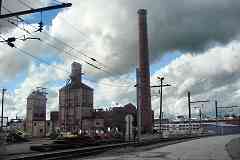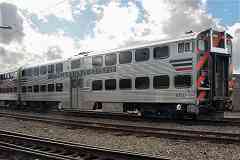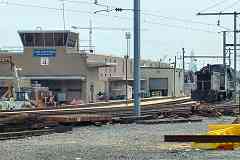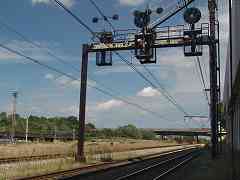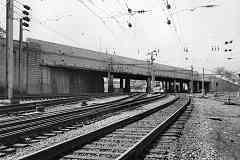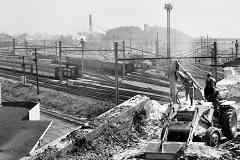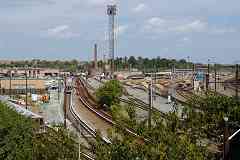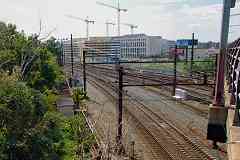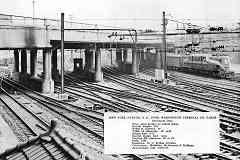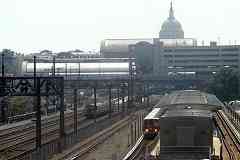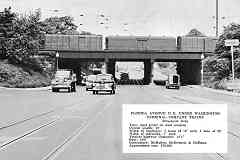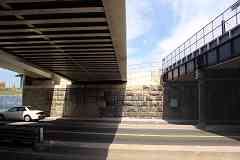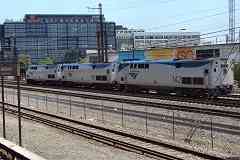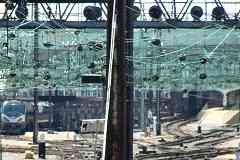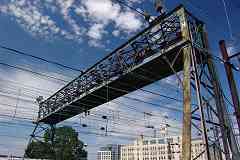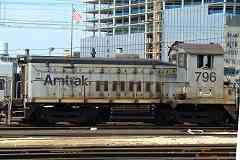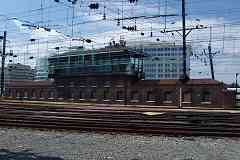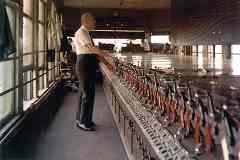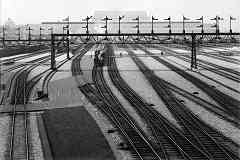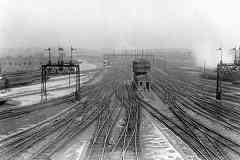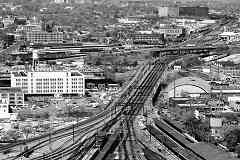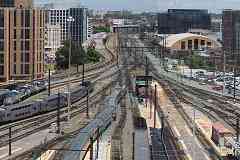|
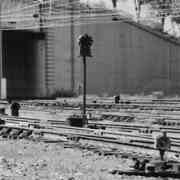
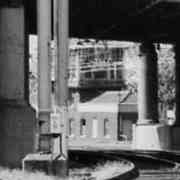 Here the yard tracks neck down to squeeze under New York Avenue.
This 1966 track-level photo captured the bridge before it was
widened. Beyond the bridge supports, the photo also captured
C Tower that was demolished around 1970 to make room for Metro.
Here the yard tracks neck down to squeeze under New York Avenue.
This 1966 track-level photo captured the bridge before it was
widened. Beyond the bridge supports, the photo also captured
C Tower that was demolished around 1970 to make room for Metro.
In their joint control of Washington Terminal Company, PRR had
priority in track layout, and B&O with signals. This helps explain
why PRR/Amtrak has better access, while the signals even during 2019
employ a B&O Color-Position Light (CPL) style. There are/were
dozens/hundreds of dwarf CPLs around the terminal, including some
mounted high on poles, as in the zoom at right. Now, security cameras
may outnumber the signals in this area.
Links:
DDOT source photo,
C Tower 1967,
B&O Eckington Yard 1923
|
